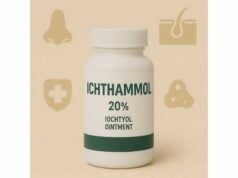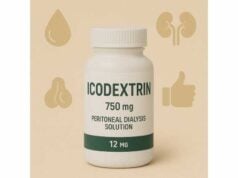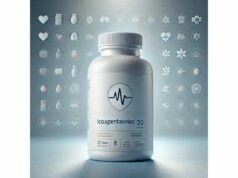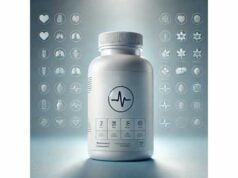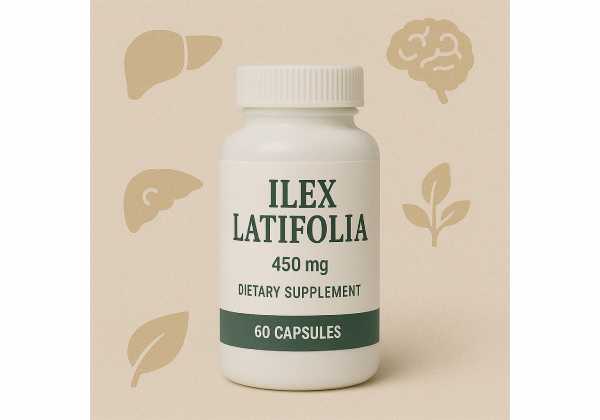
Ilex latifolia—often sold as “large-leaf kuding tea”—is a bitter, caffeine-light holly used as a daily wellness beverage across parts of East Asia. Its leaves are rich in triterpenoid saponins, phenolic acids (such as chlorogenic acids), and flavonoids that have been studied for effects on blood lipids, weight management, oxidative stress, and liver and gut health. Early human trials on “kuding tea” and several animal studies suggest potential support for cholesterol and metabolic markers, with plausible mechanisms that include AMPK activation, reduced lipogenesis, improved bile acid handling, and lower chronic inflammation. Because extracts can be much more concentrated than a cup of tea, safety depends on form and dose. This guide cuts through marketing claims and summarizes what Ilex latifolia may (and may not) do, how to use it well, how much to take, who should avoid it, and what the evidence actually shows.
Quick Overview
- May modestly lower LDL-C and total cholesterol over 4–12 weeks when consumed as kuding tea.
- Animal and cell studies show AMPK activation, reduced hepatic fat, and anti-inflammatory signaling.
- Typical tea use: 1–3 g dried leaf per 250 mL, up to 2–3 cups daily; start low due to bitterness.
- Concentrated extracts can induce liver drug-metabolizing enzymes; review medications with a clinician.
- Avoid during pregnancy or breastfeeding and with anticoagulants, antidiabetics, or significant liver disease.
Table of Contents
- What is Ilex latifolia?
- Benefits and how it works
- How to use it day to day
- Dosage and timing
- Mistakes and troubleshooting
- Safety and who should avoid
- Evidence at a glance
What is Ilex latifolia?
Ilex latifolia Thunb. is a broad-leaf evergreen holly native to East Asia. In traditional use it is infused as a bitter herbal tea known as “large-leaf kuding tea.” It’s distinct from small-leaf “kuding” made from Ligustrum species and from caffeinated Ilex beverages like yerba mate (Ilex paraguariensis). When buyers see “kuding tea,” the product may come from multiple species; identifying Ilex latifolia specifically matters if you’re trying to match research.
Chemically, Ilex latifolia leaves concentrate pentacyclic triterpenoid saponins (often called kudinosides and latifolosides), ursolic-acid derivatives, phenolic acids (notably chlorogenic acid isomers), and flavonoids. These compounds give the tea its signature bitterness and are linked to several biological effects reported in preclinical research—such as reduced lipogenesis, antioxidant activity, and modulation of inflammation. AMPK (adenosine monophosphate–activated protein kinase) activation shows up repeatedly in mechanistic work, alongside suppression of lipogenic transcription factors (for example, SREBP-1c). In animal models, these shifts correlate with less hepatic fat accumulation, improved insulin sensitivity, and better serum lipid profiles.
Unlike yerba mate, Ilex latifolia infusions are typically very low in caffeine—often effectively caffeine-free as brewed at home—though caffeine content can vary with harvest and processing. This makes it a potential option for evening use or for people avoiding stimulants. That said, bitterness itself can alter appetite or satiety signals and may not be palatable to everyone.
Commercial products appear as loose whole leaves, pressed needles or twists, tea bags, and concentrated extracts in capsules or powders. Extracts can be standardized by total saponins or chlorogenic acids; tea leaves are not standardized, so potency varies with origin, harvest time, leaf age, and how long and hot you steep.
Finally, “kuding” quality grades differ. Some premium Ilex latifolia teas are hand-processed to reduce astringency while preserving aromatic volatiles; others are very bitter and one-dimensional. For most health-focused use, the simplest approach is a short, light steep to keep bitterness manageable while still extracting a useful spectrum of polyphenols and saponins.
Benefits and how it works
Lipid support (human and animal evidence). In randomized trials that grouped “kuding tea” drinkers with metabolic disorders, pooled results suggest modest reductions in LDL-cholesterol and total cholesterol over several weeks. Although the trials differ in species used and preparation methods, the overall signal favors lipid-lowering compared with control beverages. In mice fed a high-fat diet, Ilex latifolia interventions reduce serum cholesterol and hepatic triglycerides, and they improve liver enzymes and insulin tolerance. These findings knit together with mechanistic data showing less de novo lipogenesis and greater fatty-acid oxidation.
Weight management and metabolic health (animal evidence). In long-duration mouse studies, Ilex latifolia supplementation keeps body weight gain in check without reducing food intake, and it improves insulin sensitivity. Energy expenditure appears to rise, with signals pointing to brown adipose tissue thermogenesis and higher heat production. At the molecular level, AMPK activation and downstream lipogenic gene suppression are recurring themes.
Liver and gut protection (animal evidence). Piglet and mouse models exposed to oxidative or toxic stress show that Ilex latifolia polyphenols preserve gut barrier structure, upregulate antioxidant enzymes (e.g., glutathione peroxidases), and modulate ferroptosis-related markers. In the liver, saponin-rich fractions counter oxidative stress, lower malondialdehyde, and improve aminotransferase profiles. Collectively, these data suggest a broader “metabolic tissue support” role—especially in the liver and intestinal epithelium—mediated by antioxidant capacity and inflammation control.
Anti-inflammatory actions (preclinical). Across adipose, hepatic, and intestinal tissues, Ilex latifolia preparations tend to suppress pro-inflammatory cytokine signaling (for example, dampening p38 MAPK and NF-κB activity in adipose tissue), which tracks with improvements in insulin sensitivity and lipid handling in animals. While these signals are encouraging, they’re not yet proof of anti-inflammatory benefit in everyday human use.
What’s uncertain. The human evidence base is still small, with heterogeneity in plant species and preparation, and short treatment durations. Effects on HDL-cholesterol, triglycerides, fasting glucose, and long-term weight trajectories are not consistently demonstrated in people. Real-world outcomes (e.g., cardiovascular events) have not been studied.
Likely mechanisms, in plain language.
- Turning on AMPK—the cell’s “energy sensor”—to burn rather than store fat.
- Turning down SREBP-driven fat-making programs in the liver and adipose tissue.
- Providing a robust antioxidant pool that protects cell membranes and enzymes under stress.
- Tweaking bile acid production and export, which can influence cholesterol balance and metabolic signaling.
- Calming chronic, low-grade inflammation in fat and gut tissues that otherwise worsens insulin resistance.
Bottom line: If your goal is incremental support for lipid markers as part of a broader lifestyle plan, daily Ilex latifolia tea has early human support and strong preclinical rationale, while concentrated extracts look potent but require more care around dosing and safety.
How to use it day to day
Choose the form that fits your goals.
- Whole-leaf tea (traditional): Best for beginners and for steady, gentle use. It’s easier to titrate (and to stop) and typically avoids concentrated exposure to any single compound.
- Standardized extract (capsules or powders): Useful where consistency is required (e.g., tracking lipid changes). Look for labels that state a standardization (e.g., “≥20% total saponins” or specified chlorogenic acids).
- Combination products: Some blends pair Ilex latifolia with green tea, berberine, or citrus bergamot. These may compound effects but also complicate attribution and interactions.
Brew like this to manage bitterness.
- Pre-rinse: Briefly rinse 1–2 g of leaves with hot water and discard to temper bitterness.
- Brew: Steep 1–3 g in 250 mL water at ~85–95 °C for 1–3 minutes.
- Taste-test: If too bitter, shorten steep or reduce leaf; if too mild, extend steep or add 0.5–1 g.
- Re-steep: Quality leaves can be infused 2–3 times; shorten the second steep to avoid over-extraction of harsh tannins.
When to drink.
- With meals (lipid focus): Consuming with or shortly after higher-fat meals may help align bile-acid and lipogenesis pathways with the tea’s mechanisms.
- Between meals (appetite control): The bitterness can dampen cravings for some people; test mid-afternoon.
- Evening: Often tolerated due to minimal caffeine, but try earlier first to assess GI response.
Pairing ideas (food-first).
- Fiber and plant sterols: Oats, legumes, and nuts align with cholesterol management.
- Colorful produce: Enhances polyphenol diversity and antioxidant networks.
- Protein at breakfast: Helps satiety; the tea can be a low-calorie accompanying beverage.
Stacking (be cautious).
- With green tea or catechin supplements: May augment lipid effects but increases total polyphenol load (possible GI upset).
- With berberine or statins: Do not self-combine without medical guidance; mechanisms can overlap or interact with drug metabolism.
Practical tracking.
- Take baseline readings (lipid panel, weight, waist) and repeat after 8–12 weeks of consistent use.
- Log preparation details (grams, steep time), cups per day, and any side effects.
- If using extracts, track the labeled standardization and lot number.
Sustainability and sourcing.
- Prefer suppliers that disclose species (Ilex latifolia), origin (province, farm), and processing.
- Whole, unbroken leaves are less likely to be adulterated.
- Avoid products using unspecified “kuding” with no species or testing data.
Dosage and timing
Traditional tea dosing (most people).
- Starting range: 1–2 g dried leaf per 250 mL, once daily for 3–5 days to gauge tolerance.
- Typical use: 1–3 g per cup, 1–3 cups daily (total 1–9 g/day), brewed 1–3 minutes.
- Titration: Increase by 0.5–1 g per cup or add an extra cup if you tolerate the bitterness and GI effects.
- Duration for evaluation: 8–12 weeks of consistent use before judging lipid or weight responses.
Extract dosing (experienced users, under guidance).
- Standardized saponin extracts: Common supplemental ranges are 100–300 mg extract (standardized to total saponins) one to two times daily, taken with meals. Because commercial products vary widely, match labeled standardization to your target intake; do not assume equivalence with tea.
- Chlorogenic-acid-focused extracts: If the product highlights chlorogenic acids, follow the low end of the label initially (often 100–200 mg chlorogenic acids per serving), as higher phenolic loads can upset the stomach.
Timing tips.
- With food: Helps GI comfort and aligns with lipid pathways.
- Split doses: If using extracts, morning and dinner splits are reasonable to reduce peaks.
- Hydration: Because bitterness can linger, chase with water or pair with citrus peel to soften taste.
Who should start lower.
- People with sensitive stomachs, a history of reflux with bitter herbs, or low body weight.
- Anyone taking multiple medications—start at tea strengths and discuss extract use with a clinician.
When to pause or reduce.
- New liver symptoms (upper-right abdominal discomfort, dark urine, unusual fatigue).
- New or worsened bruising/bleeding (if on anticoagulants).
- Hypoglycemia symptoms if combined with antidiabetic drugs—review with your prescriber.
What not to do.
- Don’t exceed labeled extract doses thinking it’s “just tea.” Extracts can concentrate triterpenes several-fold.
- Don’t combine with multiple polyphenol supplements without a reasoned plan; more is not always better.
Mistakes and troubleshooting
Mistake 1: Buying “kuding tea” with no species listed.
Fix: Look for “Ilex latifolia” specifically. Different species (e.g., Ligustrum robustum) have distinct chemistries and may not align with your goals or with the research you’re trying to emulate.
Mistake 2: Over-steeping to “get more benefits.”
Fix: Excessive heat/time leaches harsh tannins and too many bitter saponins, leading to GI upset and an unpleasant experience. Start with 1–3 minutes and tune by taste. Re-steep rather than over-steep.
Mistake 3: Expecting stimulant-type energy.
Fix: Ilex latifolia is typically low in caffeine. Any “lift” is more likely from reduced post-meal sluggishness or appetite modulation than from central stimulation. If you want caffeine, pair with black or green tea; if you avoid caffeine, Ilex latifolia is a friendlier evening option.
Mistake 4: Swapping an extract for tea at the same gram weight.
Fix: A 300 mg standardized extract is not the same as 300 mg of leaf. Extracts may deliver several times the saponins or chlorogenic acids per gram. Follow product directions and start low.
Mistake 5: Ignoring medication timing.
Fix: Separate from medications with narrow therapeutic windows by 2–3 hours unless your clinician advises otherwise. Concentrated Ilex preparations can induce hepatic drug-metabolizing enzymes in animals; while human data are lacking, caution is warranted.
Mistake 6: Chasing weight loss without diet changes.
Fix: Use Ilex latifolia as an adjunct to dietary fiber, activity, and sleep hygiene. In animal models, benefits occur without reduced food intake, but human outcomes rely on the whole lifestyle picture.
Common side effects and handling them.
- Nausea or bitter aftertaste: Shorten steep time; take with food; add a slice of orange peel.
- Loose stools: Reduce dose, switch to a lighter steep, or pause extracts and restart at half dose.
- Headache or lightheadedness: Rare; hydrate well and avoid stacking with multiple polyphenol products.
Flavor upgrades without sugar.
- Citrus zest, ginger coins, or cinnamon bark can soften bitterness and add aroma.
- A small pinch of salt (yes, salt) can round perceived bitterness without sweetness.
Safety and who should avoid
General tolerance. Traditional tea infusions are usually well tolerated. The most frequent complaints are pronounced bitterness, mild GI upset, and—occasionally—looser stools when steeps are long or leaves are over-measured. Sensitivity varies.
Enzyme induction and drug metabolism (extracts). In controlled animal work, high-dose kuding tea extracts induced hepatic xenobiotic-metabolizing enzymes after several weeks. This raises a prudent caution: concentrated products might alter how some drugs are processed. The effect in humans is not established, but until better data exist, people on critical medications should review extract use with a clinician and avoid self-escalation.
Anticoagulation and platelet concerns. Triterpenoid saponins and polyphenols can theoretically influence platelet function and inflammation pathways. If you take warfarin, DOACs, or antiplatelet therapy, stick to food-level tea use or avoid Ilex latifolia unless your prescriber agrees and is monitoring.
Glucose-lowering therapies. Animal and preliminary human data imply improved insulin sensitivity or glucose handling. If you take insulin or sulfonylureas, monitor for hypoglycemia when adding Ilex latifolia and coordinate dose adjustments only under medical supervision.
Liver conditions. While animal studies show hepatoprotective signals, people with existing liver disease should be conservative with extracts. If you develop jaundice, dark urine, or unusual fatigue, stop and seek care.
Pregnancy and breastfeeding. Human safety data are insufficient. Avoid during pregnancy and lactation.
Allergy and intolerance. Rare, but any new herb can provoke reactions. Start with a sip test. Discontinue if you experience rash, itching, or swelling.
Quality and contamination. As with many botanicals, supply chains vary. Choose vendors with species authentication, contaminant testing (heavy metals, pesticides, microbes), and batch-level certificates of analysis. Avoid products using vague “kuding tea” labels without species, origin, or testing.
Driving and alertness. Ilex latifolia tea is typically caffeine-light and not sedating, but if you feel lightheaded or queasy after a large bitter infusion, avoid driving until you feel normal.
Kids and adolescents. Skip extracts; tea use should be occasional and light only if recommended by a pediatric clinician.
Surgery. Stop extracts at least two weeks before elective procedures to reduce potential interaction or bleeding risks; tea use should also be paused unless cleared by your surgical team.
Evidence at a glance
Human data (kuding tea overall). Systematic review and meta-analysis of randomized trials in people with metabolic issues report modest LDL-C and total cholesterol reductions over several weeks. Study limitations include small sample sizes, heterogeneous “kuding” species (not always Ilex latifolia), short durations, and varying preparations. The lipid-lowering signal is the most consistent; effects on triglycerides, HDL-C, and body weight are less clear.
Animal and mechanistic data (Ilex latifolia).
- Metabolic benefits: Mouse models show protection against high-fat-diet weight gain, less hepatic steatosis, better insulin sensitivity, and reduced inflammatory signaling in adipose tissue, at doses typically spanning a small fraction of diet by weight.
- Liver and gut: Piglet studies under oxidative challenge suggest Ilex latifolia polyphenols preserve intestinal architecture and antioxidant capacity and modulate ferroptosis-related pathways; saponin-rich fractions in mice improve liver oxidative stress markers and aminotransferases.
- Molecular mechanisms: Across models, AMPK activation, suppression of SREBP-driven lipogenesis, and improved bile acid handling appear central. Antioxidant and anti-inflammatory pathways (e.g., NF-κB down-regulation) likely contribute.
Safety notes from research. Tea-like exposures are generally well tolerated. High-dose extracts in animals can induce liver xenobiotic enzymes—important for anyone on medications that rely on specific hepatic pathways. No robust human pharmacokinetic or interaction trials are yet available.
What you can reasonably expect. For adults targeting cardiometabolic wellness, consistent daily tea use (not extract megadosing) for 8–12 weeks may yield small improvements in LDL-C and total cholesterol, especially alongside a prudent diet and activity. Weight effects in humans are uncertain; benefits likely accrue through broader lifestyle shifts, not as a stand-alone fat burner.
Research gaps.
- Well-designed, species-verified human trials with standardized preparations.
- Head-to-head trials comparing Ilex latifolia to other dietary strategies.
- Pharmacokinetic and drug-interaction studies, particularly for statins, anticoagulants, and antidiabetic agents.
- Long-term safety beyond 12–24 weeks.
References
- Lipid-Lowering Efficacy of Kuding Tea in Patients With Metabolic Disorders: A Systematic Review and Meta-Analysis of Randomized Controlled Trials 2022 (Systematic Review)
- Chemical Composition, Bioactivity and Safety Aspects of Kuding Tea—From Beverage to Herbal Extract 2020 (Review)
- Ilex latifolia Thunb protects mice from HFD-induced body weight gain 2017
- Crude triterpenoid saponins from Ilex latifolia (Da Ye Dong Qing) ameliorate lipid accumulation by inhibiting SREBP expression via activation of AMPK in a non-alcoholic fatty liver disease model 2015
- Polyphenols Sourced from Ilex latifolia Thunb. Relieve Intestinal Injury via Modulating Ferroptosis in Weanling Piglets under Oxidative Stress 2022
Disclaimer
This article is for educational purposes only and is not a substitute for personalized medical advice, diagnosis, or treatment. Always consult a qualified healthcare professional before starting, stopping, or combining any supplement—especially if you are pregnant or breastfeeding, have a medical condition, or take prescription medications. Never disregard professional advice because of something you read here.
If you found this helpful, consider sharing it with a friend on Facebook, X (formerly Twitter), or your favorite platform, and follow us for future evidence-based guides. Your support helps us keep producing high-quality content.

